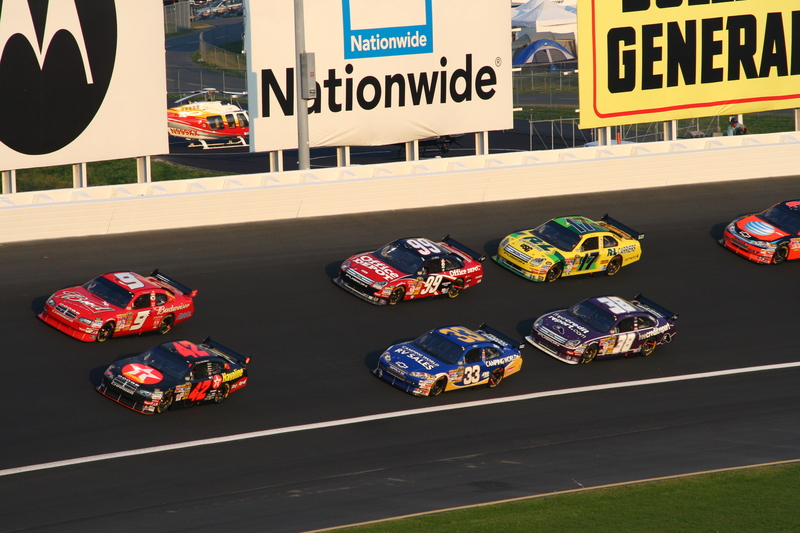Last updated on November 6th, 2023 at 07:19 pm
There’s no time limit on how long a NASCAR race can take. However, most races finish in about two hours, but some can take as long as six. Like the CocaCola 600, some races may take longer because the vehicles have to cover a longer distance. Meanwhile, other races are so short they can be completed in under two hours.
Recently, NASCAR has sought to appeal to a broader audience of fans who may not want to watch an extended race on Sunday. As a result, the organization has put on shorter races, like the Busch Light Clash at the Coliseum in Los Angeles in 2022. The Verizon 200 at the Brickyard in Indianapolis, and the Food City Dirt Race in Bristol, Tennessee, are shorter races during the NASCAR season.
What Can Impact the Length of a NASCAR Race?
One of the exciting parts of watching a NASCAR race is that you never quite know when or how it will end. There’s no time limit on how long a race can take. That means that some races can take only a few hours, and some can take all day.
There are countless reasons that a NASCAR race can go long. Races can be delayed due to accidents, safety concerns, and weather. Here’s how each of these situations can impact the length of a NASCAR race.
Accidents
Stock car racing is an aggressive style that often involves pushing and rubbing to gain track position. That physical style of racing often contributes to a high rate of accidents.
After a collision occurs, it’s not unusual for race leaders to force the drivers to slow down or even stop racing while safety crews clear the raceway of debris. If there’s a safety car on the track, the race often slows down, which means laps get finished slower, and the racing time gets extended.
Safety Concerns
Race leaders may delay or pause a race if there needs to be any repairs or cleanups done on the track. A speedway’s barriers or catch fence can often sustain damage from cars rubbing against it, which must be repaired to maintain safety for all drivers and team members. That means the race is in a pause so crews can work on the track.
Weather
Weather can derail a NASCAR Cup Series race. Several races go into delays or postponements for days after starting due to rain. While some motorsport federations race in the rain, NASCAR will not due to safety reasons. After the rain stops, race officials will then dry the track, adding to the time needed to restart the race.
What can Drivers Do When Races are in a Delay?
Several rules dictate what a driver can and can’t do during delayed races. Some racing teams may use the time that a race is under caution or safety car to take a valuable pit stop. Changing tires and refueling a vehicle while under caution is a great way to stay with the lead cars, as they move slower at that time.
Under many circumstances, drivers must stay in their cars during delays. Staying in the car is a rule set by NASCAR to make sure that the race can start and stop quickly. It also can help keep drivers safe. Since drivers are often stuck in their cars, they often can’t go to the bathroom. That means they may go in their race suit.
What is the Longest Race in the NASCAR Cup Championship?
During the NASCAR Cup Series, the longest race is the CocaCola 600, held every year at Charlotte Motor Speedway in North Carolina. The race is so long that many people think it should not be on the calendar. In 2020, the race made NASCAR history when it became the longest NASCAR event. A late spin caused the race to go into overtime, adding five laps and seven miles of distance. Brad Keselowski won after 607 miles of racing, beating long-time fan favorite Jimmie Johnson.
However, while the CocaCola 600 is the longest race in the distance, it doesn’t stack up against the longest race by time. That race is the 2020 EchoPark Automotive 500 at Texas Motor Speedway, which was a playoff race that year. After completing 52 laps, the race entered a rain delay, which lasted for nearly 48 hours. The race started on a Sunday and finished on a Wednesday.
Conclusion About How Long is a NASCAR Race?
One of the biggest criticisms of NASCAR is just how long it takes to finish a race. That’s because countless different variables impact how races play out. While many races can finish in under two and a half hours, it can feel like most of them can go well into the afternoon or evening.
That’s a long time for a racing fan to devote to one piece of media. As a result, NASCAR constantly adds shorter races to its schedule, which help appear to a broader range of fans.
Similar Posts:
How Much Do Formula 2 and 3 Drivers Make?
Do NASCAR Drivers Wear Diapers?
How Much Do NASCAR Pit Crews Make?
How Much Do NASCAR Drivers Make?
How Do You Become a NASCAR Driver?
What is the Difference Between NASCAR and Formula 1?
How Many Cars in a NASCAR Race?
Greg Kristan, owner of The Stadium Reviews, LLC and TM Blast, LLC, brings his extensive experience visiting over half of the MLB ballparks, along with numerous MLS, NHL, NBA, and NFL venues, to provide in-depth coverage on the bag policy, food options, and parking. He has also been interviewed about his experiences on several sports podcasts.






